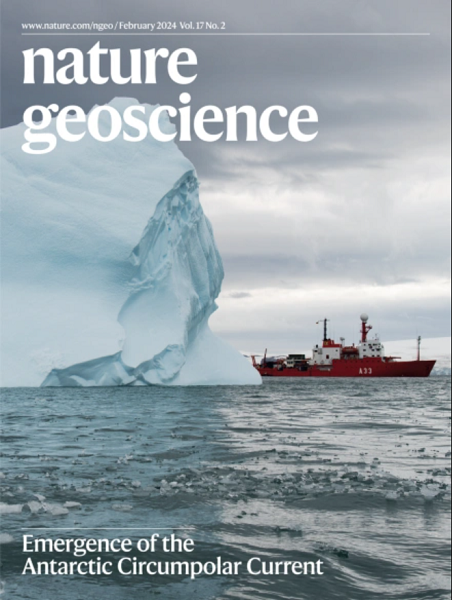赤道大西洋的季节性生产力由独特的风驱动过程形成
IF 16.1
1区 地球科学
Q1 GEOSCIENCES, MULTIDISCIPLINARY
引用次数: 0
摘要
东赤道大西洋拥有一个多产的海洋生态系统,它依赖于硝酸盐的向上供应,硝酸盐是该地区主要的限制性营养物质。地表叶绿素水平的升高表明,年生产力峰值出现在北半球的夏季,大致与东风增强的时间一致。为了提高赤道大西洋的生产力,富含硝酸盐的水必须上升到赤道暗流上方的湍流层。利用两次跨大西洋赤道调查的数据,以及赤道系泊的延长时间序列,我们展示了三个独立的风驱动过程如何塑造赤道大西洋生产力的季节性:(1)硝酸碱浅滩对增强的东风的响应;(2)以最大东向速度定义的赤道潜流核心深度受海盆尺度赤道驻波的年振荡控制;(3)赤道潜流核心上方切变带的混合强度受局地风和瞬时风的支配。这三种机制的相互作用形成了赤道大西洋独特的养分供应和生产力的季节性循环,由于赤道浅层暗流,生产力在4月份最低,而由于浅层硝酸碱加上增强的混合,生产力在7月份最高。本文章由计算机程序翻译,如有差异,请以英文原文为准。


Seasonal productivity of the equatorial Atlantic shaped by distinct wind-driven processes
The eastern equatorial Atlantic hosts a productive marine ecosystem that depends on upward supply of nitrate, the primary limiting nutrient in this region. The annual productivity peak, indicated by elevated surface chlorophyll levels, occurs in the Northern Hemisphere summer, roughly coinciding with strengthened easterly winds. For enhanced productivity in the equatorial Atlantic, nitrate-rich water must rise into the turbulent layer above the Equatorial Undercurrent. Using data from two trans-Atlantic equatorial surveys, along with extended time series from equatorial moorings, we demonstrate how three independent wind-driven processes shape the seasonality of equatorial Atlantic productivity: (1) the nitracline shoals in response to intensifying easterly winds; (2) the depth of the Equatorial Undercurrent core, defined by maximum eastward velocity, is controlled by an annual oscillation of basin-scale standing equatorial waves; and (3) mixing intensity in the shear zone above the Equatorial Undercurrent core is governed by local and instantaneous winds. The interplay of these three mechanisms shapes a unique seasonal cycle of nutrient supply and productivity in the equatorial Atlantic, with a productivity minimum in April due to a shallow Equatorial Undercurrent and a productivity maximum in July resulting from a shallow nitracline coupled with enhanced mixing. The seasonal timing of peak primary productivity in the eastern equatorial Atlantic is a result of wind-driven processes coinciding with increased surface nitrate supply, according to transect and mooring observations.
求助全文
通过发布文献求助,成功后即可免费获取论文全文。
去求助
来源期刊

Nature Geoscience
地学-地球科学综合
CiteScore
26.70
自引率
1.60%
发文量
187
审稿时长
3.3 months
期刊介绍:
Nature Geoscience is a monthly interdisciplinary journal that gathers top-tier research spanning Earth Sciences and related fields.
The journal covers all geoscience disciplines, including fieldwork, modeling, and theoretical studies.
Topics include atmospheric science, biogeochemistry, climate science, geobiology, geochemistry, geoinformatics, remote sensing, geology, geomagnetism, paleomagnetism, geomorphology, geophysics, glaciology, hydrology, limnology, mineralogy, oceanography, paleontology, paleoclimatology, paleoceanography, petrology, planetary science, seismology, space physics, tectonics, and volcanology.
Nature Geoscience upholds its commitment to publishing significant, high-quality Earth Sciences research through fair, rapid, and rigorous peer review, overseen by a team of full-time professional editors.
 求助内容:
求助内容: 应助结果提醒方式:
应助结果提醒方式:


